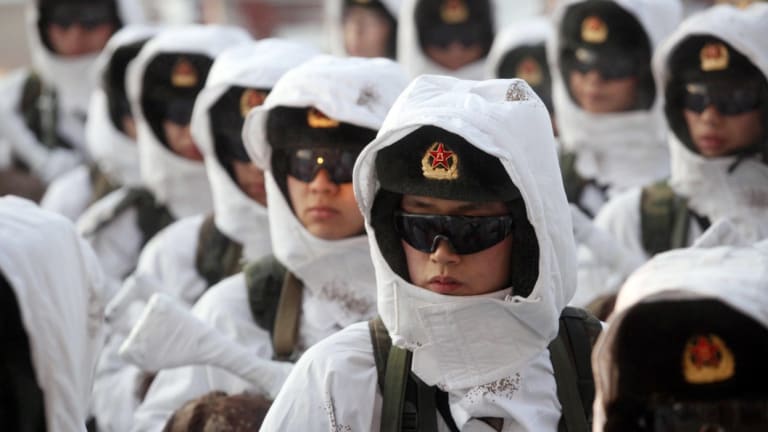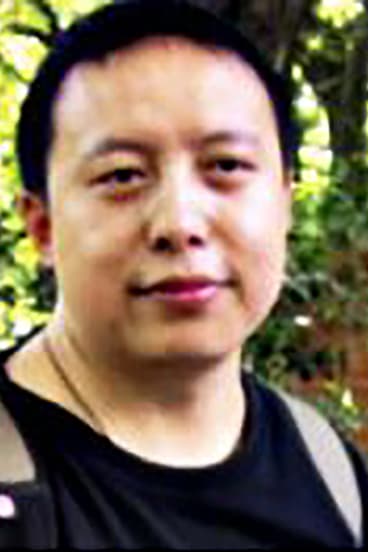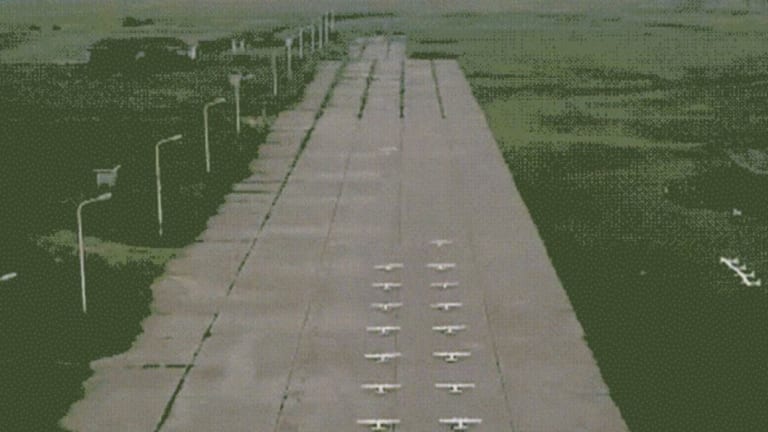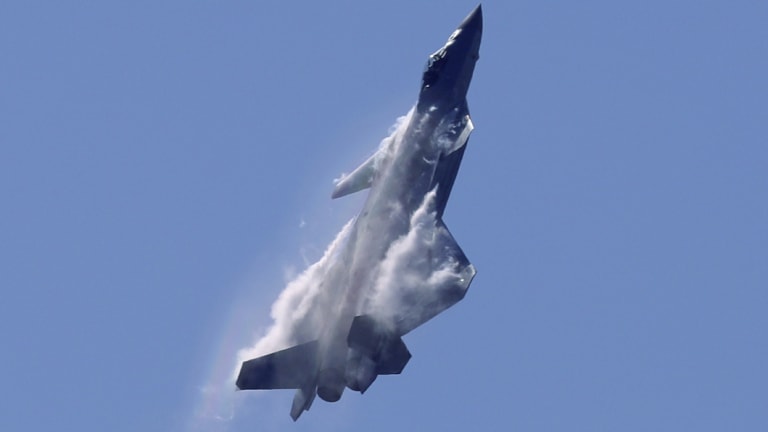10 November 2018
From student to drone swarms how the Chinese Communist Party trains its cadres in Australia
In 2009, a student called Wang Xiangke came to the Australian National University as a visiting PhD scholar. It was a year after the Olympic torch relay passed through Canberra, attracting thousands of Chinese students who organised with the Chinese embassy to protect the so-called sacred flame.
That torch relay raised the same questions about the Chinese Communist Party’s overseas influence that have now developed into a national debate. I was there as a child and clearly remember the burning flags and scuffles between Chinese students and Free Tibet protesters.
But Wang Xiangke was no ordinary international student from China, one of the thousands of aspiring scholars rightly embraced by Australia’s tertiary education sector. Instead, Wang was sent here by the People’s Liberation Army’s National University of Defence Technology (NUDT) as part of its program to use global academic expertise to achieve military ends.
Spending two years in Canberra, Wang trained and worked in artificial intelligence and robotics. Papers he wrote at the time show that he was working on “formation stabilisation” for groups of drones, for example
But more important than his publications were the training and skills he received from ANU. He came to learn from Australia, not to share the PLA’s secrets.
China's National University of Defence Technology claims that all students it sends overseas are Chinese Communist Party members: “The environment overseas is different; one can’t avoid coming into direct contact with all kinds of harmful ideologies and even anti-CCP and anti-Chinese rhetoric," one university party official explained. "Because of this, we must strongly emphasise the educational management of party members studying abroad, firmly casting a line of ideological defence.” shortlist
Scientists like Wang are required to return to China on time after studying or working overseas. A People's Liberation Army newspaper claims that in recent years “100 per cent of the scientists sent abroad by NUDT returned on time, becoming key forces in their work units”.
It’s this kind of upskilling that the Chinese military hopes to achieve from sending its best and brightest overseas. The focus on cultivating better talent for the PLA suggests that it’s no longer just aspiring to reach the level of the West with some help from stolen technology, but to go beyond the West in areas of military technology, to exceed the capabilities of Western militaries in areas such as missiles, aircraft, radar and unmanned vehicles.
Developing better unmanned vehicles for the Chinese military is precisely what Wang now aspires to do, having benefited from ANU’s world-class experts, resources and facilities.
“Unmanned combat is the commanding height of applied artificial intelligence; we must rush to occupy it!” Wang told Chinese reporters in 2017.
Wang is now an associate professor at the NUDT, where the military has explicitly designated him as a scholar of exceptional potential. He is chief technician of a classified military project whose name and subject have not been released to the public. His PhD thesis, in part the product of his work at ANU, has also not been released publicly, suggesting its contents are also classified.
But simple internet searches indicate that he is part of the PLA’s “Drone Swarm Autonomous Combat Team”, which works to perfect drone swarms.
What does that look like? A Chinese media article on his work paints the following picture: “Dozens of rows of fixed-winged aerial drones take off from a runway. At speed, they form ranks and fly towards a designated battlefield area for their reconnaissance mission.”
Besides battlefield reconnaissance, swarms of drones can overwhelm existing air defences and destroy aircraft carriers. Flying one of these inexpensive devices into the air intake of an F-22 fighter jet could take down the plane.
Wang’s story is just one among those of the estimated 2500 scientists and engineers "selected" by the Chinese military to study and work abroad in the last decade. This global phenomenon is detailed in my report for the Australian Strategic Policy Institute’s International Cyber Policy Centre, "Picking flowers, making honey: the Chinese military’s collaboration with foreign universities".
The report’s title comes from a saying used by the Chinese military to describe stories like Wang Xiangke’s – “picking flowers in foreign lands to make honey in China”.
Using Chinese-language sources and analysis of papers published by Chinese military scientists, the report presents the first detailed analysis of the nature and scale of the PLA’s presence in overseas universities and research institutes. It finds that the US, Britain, Canada, Australia and Germany are, in that order, the top countries for research collaboration with the PLA, by number of co-authored papers.
Globally, the number of peer-reviewed articles published as part of this collaboration has grown sevenfold in a decade.
Per capita, though, the situation is particularly extreme in Australia. Australian collaboration with the PLA has produced over 600 peer-reviewed articles and has likely involved around 300 Chinese military scientists coming to Australia as PhD students or visiting scholars. Australia engages in the most research collaboration with the PLA among Five Eyes nations on a per capita basis, at six times the level of that in the US.
Researchers at the University of New South Wales publish more peer-reviewed articles with the PLA than any other university in the West. Two professors at Australian universities even serve as doctoral supervisors at NUDT.
My report also uncovers two dozen new cases of Chinese military scientists concealing their military affiliation to travel abroad, including 17 who came to Australia, going to Curtin University and UNSW as visiting scholars to work on satellite navigation technology.
PLA rocket scientists have also used cover to work on hypersonic missiles in Norway, Britain and Germany. Hu Changhua, for example, is head of a PLA university’s missile testing centre. Claiming to be from the Xi’an Research Institute of High Tech - which doesn’t actually exist - he visited a university in Germany for four months and didn’t publish any research while there. It’s difficult to say what he did in Germany, but the fact that his work for the PLA focuses on missiles should offer some indication.
Zhu Xinhui, a lecturer at the PLA Information Engineering University, and trains geospatial and signals intelligence officers, was a visiting scholar at UNSW in 2016. Yet in numerous journal articles and the program of a conference held at UNSW she is instead described as being from the Zhengzhou Institute of Surveying and Mapping, which appears to only exist on paper.
Who benefits? In Wang Xiangke’s case, Australia gained a handful of research papers that he wrote when he was at ANU. The Chinese military gained a researcher who is developing technologies that might one day allow it to take out aircraft carriers and fighter jets. The Chinese military benefits far more than we do from activities driven by a recognition that the PLA’s scientific talent and universities are behind our own.
Openness and cooperation is fundamental to the progress of science. But as Steve Tsang, head of the SOAS China Institute at the University of London, observes: “Conducting research for the sake of advancing science does not fall within the remit of PLA research scientists.”
Chinese army research is focused on one goal: to support the Chinese Communist Party and its interests, and collaboration with the Chinese military poses substantial risks to security and Australia’s interests, as China’s strategic and security interests often do not align with our own.
Collaboration with the PLA on technologies which have valuable military applications also raises moral concerns.
Some of those studying abroad work on surveillance and artificial intelligence technologyat the same time that China is greatly expanding its use of these technologies to monitor and suppress dissent. Meanwhile, it currently interns an estimated one million Uighurs in a rapidly growing network of re-education camps.
Some collaboration between Chinese military scientists and overseas scientists falls into areas such as hypersonic missiles, supercomputer technology and navigation systems. With hypersonic aircraft technology, on which Britain has collaborated with Chinese military scientists, China could send nuclear warheads across the globe at six times the speed of sound.
With supercomputers, an area in which UNSW has extensively collaborated with the PLA, the Chinese military develops nuclear weapons and designs advanced aircraft. With navigation systems on missiles the PLA could better track and strike targets in Taiwan or ships in the South China Sea, where Australia conducts exercises and patrols.
These findings call into question the way Australian universities have been collaborating with China on research. Responding to my report’s discovery of a PLA scientist who spent a year at Curtin University working on satellite navigation while claiming to be from the Zhengzhou Institute of Surveying and Mapping, Curtin University told Fairfax that "he does not deal with military information or technology".
Fields such as satellite navigation have both military and civilian uses.
Moving forward, it will be important to make a clear distinction between beneficial research collaboration with China, of which there is much, and collaboration with the Chinese military that ultimately may harm Australia’s interests.
If universities fail to make this distinction, they risk tarring all their collaboration with China with the same brush.
The issues raised by collaboration that harms Australia's interests have not yet been addressed by governments or universities here, or globally.
My report recommends that they work together to advance scientific progress and foster cooperation while ensuring that any research collaboration is in the national interest. The Australian government can start by developing a clear policy on collaboration with the Chinese military – a policy that should inform legislative and other responses.
The government has a number of tools at its disposal for dealing with the PLA’s activities. The Defence Trade Controls Act, which is currently undergoing a review described as "timely and necessary" by one expert, could be amended to restrict transfers of sensitive technologies, which include training, to members of non-allied militaries such as the PLA when they’re in Australia.
Under current legislation it might be illegal for someone in Australia to remotely train a PLA scientist in China in a field such as navigation technology, but it would be perfectly legal for that same PLA scientist to come to Australia for the same training.
More effective immigration vetting could be applied to members of the Chinese military who intend to use knowledge and skills gained in Australia to develop military technology back home.
Universities, as publicly funded bodies, are obliged to take a more proactive approach to their engagement with China, ensuring that it does not compromise their own security and Australia’s interests.
Finally, we need an approach to the China relationship that’s grounded in Australia’s interests and values. Australia needs to think about China without being paralysed by our phobia of upsetting the Chinese government.
If we can’t properly manage and control this collaboration with the Chinese military, then we can’t claim to have a healthy relationship with China.




No comments:
Post a Comment
Comments always welcome!